Tonight we welcomed Stan Bryan who offered us a demonstration that would give us an insight into 2 tricky subjects, offcentre turning and thin turning. The project for the night is a figure with thin turned legs. A nominal 20mm square blank of straight grained strong wood was centre marked and one end only marked with 2 off 10mm offsets diagonally opposite.
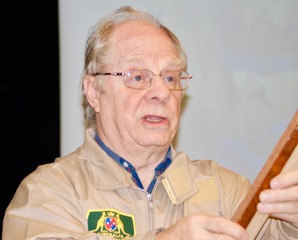
The blank was mounted in a chuck with pin jaws at the offset end and the tailstock brought up for support.
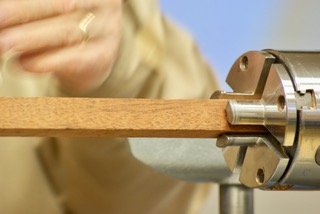
Stan gave a major technique tip here, the tailstock is purely for support at all times in this project. It should only just touch the piece. A test for this is that you should be able to stop the revolving centre spinning by just touching it, any more pressure than this will risk the piece breaking. This was turned to a cylinder except for 20 mm by the tailstock as this will be turned to make a ball mount for reverse chucking. This allows the piece to be offset without stressing the workpiece. The piece was reversed and the tailstock located lightly in one of the offset points and the chuck tightened. The waist of the figure was turned to about 3mm with a cove and round.
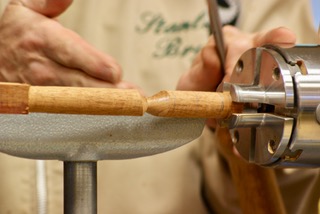
This was sanded using an emery board working up to the highest point to retain the crisp edges. This area was then sprayed with a clear lacquer, denibbed and then sprayed with a colour. A couple of quick squirts is all that was needed. The piece was then reset into the other offset mark and the chuck retightened. To make sure that the tailstock was not stressing the piece Stan disconnected it and the piece did not move so it was all ok. The tailstock was reconnected and the neck section was turned up towards the chuck.
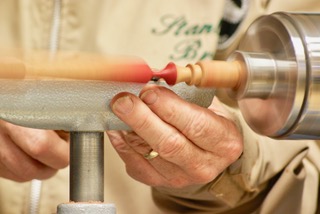
This area was sanded as before and the piece reset on the centre mark and the head turned to 10mm to accept the hat. This was sanded and then cut off with a hacksaw as parting may break the piece. The piece was reversed in the chuck and a cup revolving centre was used to support the head again very lightly and with some tissue paper inside for protection.
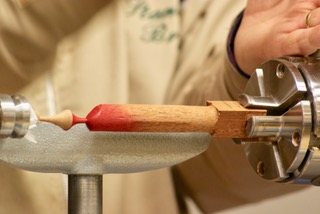
The body was turned down to the leg, sanded and after masking off the other sections was sprayed as before to finish the body.
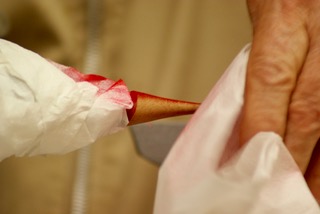
The legs were then turned to about 2.5 to 3mm with a blob for the knees and the “ankles” made with a tenon on the bottom to take the base.
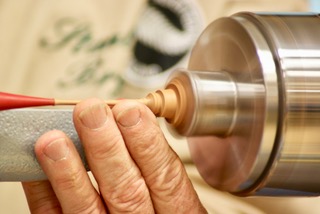
After sanding the piece was again cut off with the hacksaw.
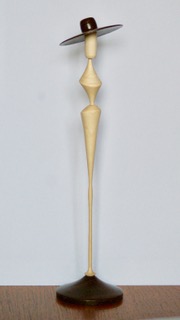
All in all this was a very interesting demonstration and Stan provided loads of technique explanations and tips so it seems that everyone took away something from the night.
